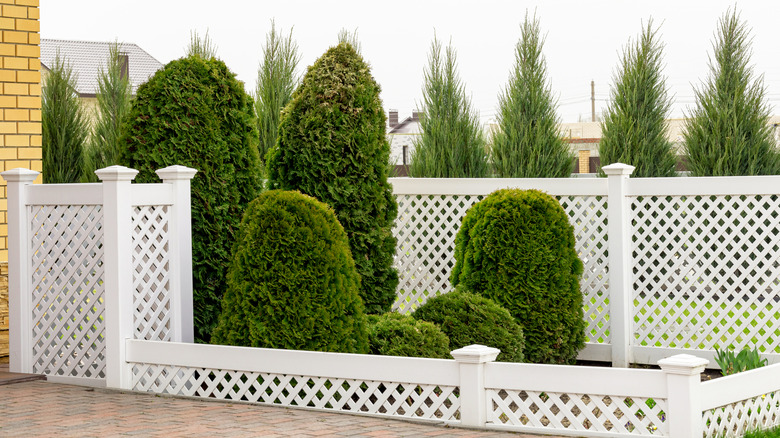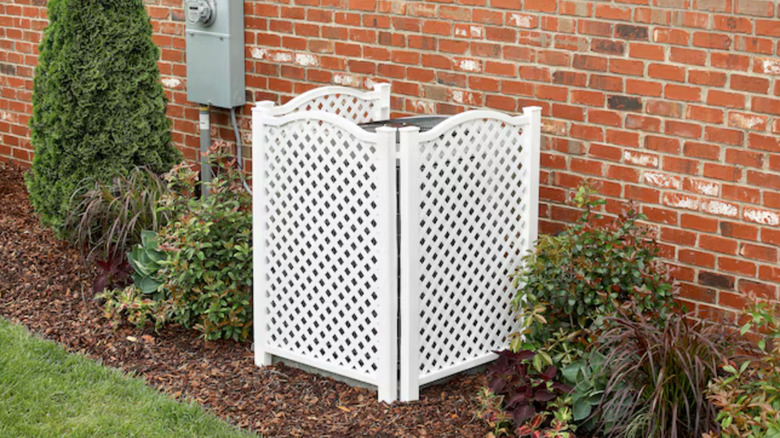Use Privacy Screens From Lowe's To Make A Temporary Fence For Your Yard
Building a DIY privacy fence to create a quiet escape in your backyard doesn't have to be difficult. Whether you're a homeowner looking for a budget-friendly option or a renter who can only install something temporary, this DIY fence that uses Freedom Grab and Go Vinyl/Polyresin Outdoor Privacy Screens from Lowe's is the perfect solution. From grass-covered yards to cement patios, this project is adaptable to all kinds of backyard layouts.
The privacy screens come with stakes and hardware to secure them to the ground. This is great if you're installing the fence in a grassy, soft area. But, if you need to install the fence on your patio, don't worry. This can still be done with a few extra supplies and some helpful tips for making temporary fence panels more secure. For patio installations, you will need the privacy panels, some L-shaped brackets (two per panel), cedar deck boards, and a weight — pavers or bricks work great.
Building a temporary fence with privacy panels
To build your DIY privacy fence, you will first need to determine how many panels you need for your space. Then, make sure you have two L-shaped brackets per panel. Now, lay your wood deck boards out to create the outline of your fence. For this project, the best type of wood to use to bring your DIY deck plans to life will be the one that's most affordable, since the boards are largely out of sight.
With your outline in place, it's time to start attaching the privacy panels to each other. The Lowe's panels come with their own hardware — an angle bracket for corner attachments and a horizontal bracket for straight connections. For this, simply follow the manufacturer's instructions, avoiding any notes about the included ground stakes. Next, you need to attach the panels to the wood outline. For this, use screws and washers to adhere your L-bracket to both the wood board and the plastic panel, placing one bracket on each leg of your panel. Now that the basic structure is complete, you can place weights along the deck board base to keep your fence from moving or falling over.
Potential privacy fence pitfalls to avoid
While temporary fencing is a great solution for renters or condo-dwellers dealing with a strict HOA, it does have its downsides. Even with the brick weights on this particular DIY, the fence is still subject to falling over in extreme weather. If you live in an area known for heavy winds or intense storms, you might want to choose a sturdier option.
Another potential pitfall is failing to check your local regulations to see if a temporary fence of this nature is allowed. Do some research beforehand to familiarize yourself with the rules. There may be guidelines to follow or permits to attain. It's also worth conferring with your neighbors beforehand to ensure there will be no issues or complaints on their end. Finally, remember to carefully consider the purpose of your fence before you start building. From covering your air conditioner unit to fencing in an outdoor party, the layout and type of fencing you choose could differ for each scenario.

